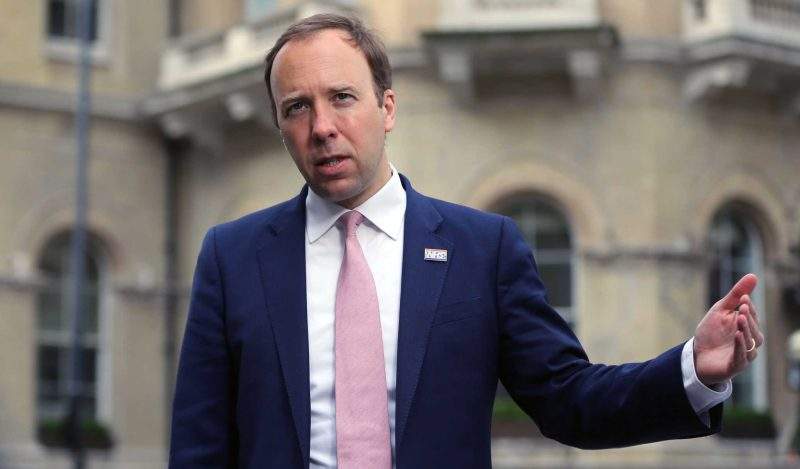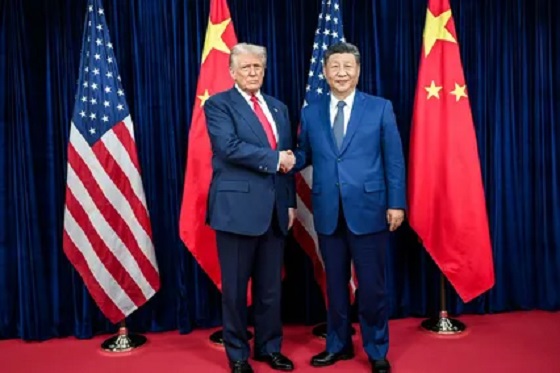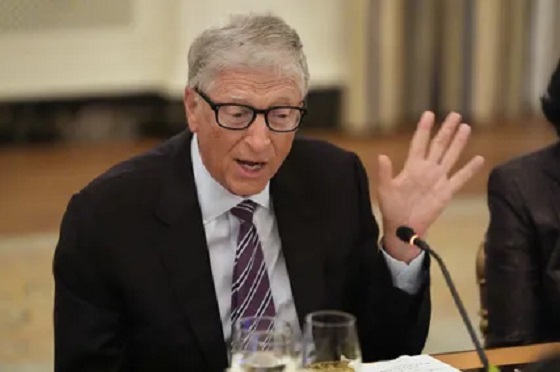Brownstone Institute
The UK Narrative Falls Apart with Leaked Messages

From the Brownstone Institute
BY
Leaked messages from December 13, 2020, show former UK Health Secretary Matt Hancock planning to “deploy the new variant” in Covid messaging to “frighten the pants out of everyone” in order to “get proper behaviour change” in the British public’s compliance with lockdown measures.
The new leak is the most damning revelation to come so far from the Daily Telegraph’s recently-announced ‘Lockdown Files,’ which are based on an archive of over 100,000 messages sent between Hancock and other officials. Journalist Isabel Oakeshott ostensibly obtained the WhatsApp messages to assist with a book about Hancock, comprising the biggest leak of UK Government data in over a decade and shedding new light on the UK’s lockdowns, mandates, and fear messaging.
As the Telegraph summarized:
The Lockdown Files – more than 100,000 WhatsApp messages sent between ministers, officials and others – show how the Government used scare tactics to force compliance and push through lockdowns.
In another message Simon Case, the Cabinet Secretary, said that “the fear/guilt factor” was “vital” in “ramping up the messaging” during the third national lockdown in Jan 2021.
The previous month, Hancock, the then health secretary, appeared to suggest in one message that a new strain of Covid that had recently emerged would be helpful in preparing the ground for the looming lockdown, by scaring people into compliance.
In a WhatsApp conversation on Dec 13, obtained by the Telegraph, Damon Poole – one of Mr Hancock’s media advisers – informed his boss that Tory MPs were “furious already about the prospect” of stricter Covid measures and suggested “we can roll pitch with the new strain.”
The comment suggested that they believed the strain could be helpful in preparing the ground for a future lockdown and tougher restrictions in the run-up to Christmas 2020.
Mr Hancock then replied: “We frighten the pants off everyone with the new strain.”
Mr Poole agreed, saying: “Yep that’s what will get proper bahviour [sic] change.”
Psychologists have already warned that some Government messaging during Covid, including using alleged “fear tactics” in poster and health campaigns, were “grossly unethical” and that inflated fear levelscontributed to excess non-Covid deaths and increased anxiety disorders…
Four months later, in Oct 2020, Mr Poole suggested in a group chat that a decision to stop publishing a so-called watchlist of the areas with the highest prevalence of the virus would be helpful to the Government, because it would make every area of the country concerned about the spread of Covid in a second wave.
“It helps the narrative that things are really bad if we don’t publish,” messaged Mr Poole.
In a second article on the new revelation, the Telegraph went on:
Throughout the course of the pandemic, officials and ministers wrestled with how to ensure the public complied with ever-changing lockdown restrictions. One weapon in their arsenal was fear.
“We frighten the pants off everyone,” Matt Hancock suggested during one WhatsApp message with his media adviser.
The then health secretary was not alone in his desire to scare the public into compliance. The WhatsApp messages seen by the Telegraph show how several members of Mr Hancock’s team engaged in a kind of “Project Fear,” in which they spoke of how to utilise “fear and guilt” to make people obey lockdown.
An Imperial College London survey of Covid infections in the community – called the React programme and led by the eminent professor Lord Darzi – provided “positive” news for Mr Hancock and his team… But when the media focused on a separate report by Public Health England and Cambridge University showing a high transmission rate in some parts of the country – prompting speculation that local lockdowns could follow – Mr Hancock said: “That’s no bad thing.” Sir Patrick Vallance, the Government’s Chief Scientific Adviser, agreed.
With recorded Covid cases now down to just 689, the Government was days away from reopening pubs, restaurants and hairdressing salons.
But on June 30 2020, Leicester had just gone into a local lockdown. In a WhatsApp group called “Local Action Committee,” Emma Dean, Mr Hancock’s special adviser on policy, reported back to the group a rumour that Milton Keynes may be the next town plunged into a local lockdown.
Jamie Njoku-Goodwin, Mr Hancock’s media adviser, replied that it would not be “unhelpful” for the public to think they could be next.
They agreed that minor adjustments, such as banning angling, would be “parodied galore” – so decided that “fear” and/or “guilt” were vital tools in ensuring compliance.
They discussed making mask-wearing mandatory in “all settings” because it had a “very visible impact.”
Along with Hancock’s terror campaign are several other eye-opening revelations. In one conversation, then-PM Boris Johnson declined to lift lockdown restrictions after being told that reopening was “too far ahead of public opinion.”

Johnson later expressed regret about his decision to implement a second lockdown after being informed that the decision had been based on “very wrong” mortality data.
In another incident, a mask mandate was imposed on British schoolchildren for the first time after Chief Medical Officer Chris Whitty reasoned that the issue was “not worth an argument” with First Minister of Scotland and strict lockdown advocate Nicola Sturgeon.

By any measure, the Telegraph’s Lockdown Files provide invaluable and astonishing new insight into the depths to which the British Government and its counterparts all over the world sunk as they weighed the perceptions of these unprecedented, unscientific, futile measures against the opinion of the increasingly-terrified and ravenous segment of the public that kept demanding more of them, while devising ever-more-manipulative means of terrifying the more skeptical segment of the public into complying.
Still, critics of the Telegraph have valid reasons for skepticism. While the Telegraphhas revealed astonishing evidence of what happened during Britain’s Covid response, after the initial lockdowns of spring 2020, it has yet to reveal any information as to why those initial lockdowns happened.
This is a conspicuous oversight, as the Telegraph itself, and most of its journalists, supported the initial lockdowns of spring 2020. Additionally, as a study by Cardiff University demonstrated, the primary factor by which most citizens judged the threat of Covid was their own government’s decision to impose strict lockdowns. The measures thus created a feedback loop in which the lockdowns themselves sowed the fear that made citizens believe their risk of dying from Covid was hundreds of times greater than it really was, in turn causing them to support more lockdowns, mandates, and restrictions.
For that reason, thoughtful commenters tend to believe that determining how the initial lockdown decision was made in spring 2020 remains the most important question of the entire Covid story. Everything else was downstream from the unprecedented terror sown by that initial decision. And, because widespread terror could be used as an excuse for all the decisions that came after, the activities that instigated the initial lockdown decision in spring 2020 may be the only ones in which criminal conduct is likely to be found.
Thus, insofar as the Telegraph fails to shed any light on the activities that led to the initial lockdowns in spring 2020, the value of the Lockdown Files in obtaining justice for the response to Covid will be severely limited.
That said, some of the Telegraph’s revelations of what happened—such as Hancock’s desire to “deploy the new variant” to “frighten the pants off the public”—are so damning that hopefully the public will begin taking seriously the question of why this all happened as well.
Republished from the author’s Substack
Brownstone Institute
The Doctor Will Kill You Now

From the Brownstone Institute
Way back in the B.C. era (Before Covid), I taught Medical Humanities and Bioethics at an American medical school. One of my older colleagues – I’ll call him Dr. Quinlan – was a prominent member of the faculty and a nationally recognized proponent of physician-assisted suicide.
Dr. Quinlan was a very nice man. He was soft-spoken, friendly, and intelligent. He had originally become involved in the subject of physician-assisted suicide by accident, while trying to help a patient near the end of her life who was suffering terribly.
That particular clinical case, which Dr. Quinlan wrote up and published in a major medical journal, launched a second career of sorts for him, as he became a leading figure in the physician-assisted suicide movement. In fact, he was lead plaintiff in a challenge of New York’s then-prohibition against physician-assisted suicide.
The case eventually went all the way to the US Supreme Court, which added to his fame. As it happened, SCOTUS ruled 9-0 against him, definitively establishing that there is no “right to die” enshrined in the Constitution, and affirming that the state has a compelling interest to protect the vulnerable.
SCOTUS’s unanimous decision against Dr. Quinlan meant that his side had somehow pulled off the impressive feat of uniting Antonin Scalia, Ruth Bader Ginsberg, and all points in between against their cause. (I never quite saw how that added to his luster, but such is the Academy.)
At any rate, I once had a conversation with Dr. Quinlan about physician-assisted suicide. I told him that I opposed it ever becoming legal. I recall he calmly, pleasantly asked me why I felt that way.
First, I acknowledged that his formative case must have been very tough, and allowed that maybe, just maybe, he had done right in that exceptionally difficult situation. But as the legal saying goes, hard cases make bad law.
Second, as a clinical physician, I felt strongly that no patient should ever see their doctor and have to wonder if he was coming to help keep them alive or to kill them.
Finally, perhaps most importantly, there’s this thing called the slippery slope.
As I recall, he replied that he couldn’t imagine the slippery slope becoming a problem in a matter so profound as causing a patient’s death.
Well, maybe not with you personally, Dr. Quinlan, I thought. I said no more.
But having done my residency at a major liver transplant center in Boston, I had had more than enough experience with the rather slapdash ethics of the organ transplantation world. The opaque shuffling of patients up and down the transplant list, the endless and rather macabre scrounging for donors, and the nebulous, vaguely sinister concept of brain death had all unsettled me.
Prior to residency, I had attended medical school in Canada. In those days, the McGill University Faculty of Medicine was still almost Victorian in its ways: an old-school, stiff-upper-lip, Workaholics-Anonymous-chapter-house sort of place. The ethic was hard work, personal accountability for mistakes, and above all primum non nocere – first, do no harm.
Fast forward to today’s soft-core totalitarian state of Canada, the land of debanking and convicting peaceful protesters, persecuting honest physicians for speaking obvious truth, fining people $25,000 for hiking on their own property, and spitefully seeking to slaughter harmless animals precisely because they may hold unique medical and scientific value.
To all those offenses against liberty, morality, and basic decency, we must add Canada’s aggressive policy of legalizing, and, in fact, encouraging industrial-scale physician-assisted suicide. Under Canada’s Medical Assistance In Dying (MAiD) program, which has been in place only since 2016, physician-assisted suicide now accounts for a terrifying 4.7 percent of all deaths in Canada.
MAiD will be permitted for patients suffering from mental illness in Canada in 2027, putting it on par with the Netherlands, Belgium, and Switzerland.
To its credit, and unlike the Netherlands and Belgium, Canada does not allow minors to access MAiD. Not yet.
However, patients scheduled to be terminated via MAiD in Canada are actively recruited to have their organs harvested. In fact, MAiD accounts for 6 percent of all deceased organ donors in Canada.
In summary, in Canada, in less than 10 years, physician-assisted suicide has gone from illegal to both an epidemic cause of death and a highly successful organ-harvesting source for the organ transplantation industry.
Physician-assisted suicide has not slid down the slippery slope in Canada. It has thrown itself off the face of El Capitan.
And now, at long last, physician-assisted suicide may be coming to New York. It has passed the House and Senate, and just awaits the Governor’s signature. It seems that the 9-0 Supreme Court shellacking back in the day was just a bump in the road. The long march through the institutions, indeed.
For a brief period in Western history, roughly from the introduction of antibiotics until Covid, hospitals ceased to be a place one entered fully expecting to die. It appears that era is coming to an end.
Covid demonstrated that Western allopathic medicine has a dark, sadistic, anti-human side – fueled by 20th-century scientism and 21st-century technocratic globalism – to which it is increasingly turning. Physician-assisted suicide is a growing part of this death cult transformation. It should be fought at every step.
I have not seen Dr. Quinlan in years. I do not know how he might feel about my slippery slope argument today.
I still believe I was correct.
Brownstone Institute
Trump Covets the Nobel Peace Prize

From the Brownstone Institute
By
Many news outlets reported the announcement of the Nobel Peace Prize on Friday by saying President Donald Trump had missed out (Washington Post, Yahoo, Hindustan Times, Huffington Post), not won (USA Today), fallen short (AP News), lost (Time), etc. There is even a meme doing the rounds about ‘Trump Wine.’ ‘Made from sour grapes,’ the label explains, ‘This is a full bodied and bitter vintage guaranteed to leave a nasty taste in your mouth for years.’

For the record, the prize was awarded to María Corina Machado for her courageous and sustained opposition to Venezuela’s ruling regime. Trump called to congratulate her. Given his own attacks on the Venezuelan president, his anger will be partly mollified, and he could even back her with practical support. He nonetheless attacked the prize committee, and the White House assailed it for putting politics before peace.
He could be in serious contention next year. If his Gaza peace plan is implemented and holds until next October, he should get it. That he is unlikely to do so is more a reflection on the award and less on Trump.
So He Won the Nobel Peace Prize. Meh!
Alfred Nobel’s will stipulates the prize should be awarded to the person who has contributed the most to promote ‘fraternity between nations…abolition or reduction of standing armies and…holding and promotion of peace congresses.’ Over the decades, this has expanded progressively to embrace human rights, political dissent, environmentalism, race, gender, and other social justice causes.
On these grounds, I would have thought the Covid resistance should have been a winner. The emphasis has shifted from outcomes and actual work to advocacy. In honouring President Barack Obama in 2009, the Nobel committee embarrassed itself, patronised him, and demeaned the prize. His biggest accomplishment was the choice of his predecessor as president: the prize was a one-finger send-off to President George W. Bush.
There have been other strange laureates, including those prone to wage war (Henry Kissinger, 1973), tainted through association with terrorism (Yasser Arafat, 1994), and contributions to fields beyond peace, such as planting millions of trees. Some laureates were subsequently discovered to have embellished their record, and others proved to be flawed champions of human rights who had won them the treasured accolade.
Conversely, Mahatma Gandhi did not get the prize, not for his contributions to the theory and practice of non-violence, nor for his role in toppling the British Raj as the curtain raiser to worldwide decolonisation. The sad reality is how little practical difference the prize has made to the causes it espoused. They bring baubles and honour to the laureates, but the prize has lost much of its lustre as far as results go.
Trump Was Not a Serious Contender
The nomination processes start in September and nominations close on 31 January. The five-member Norwegian Nobel committee scrutinises the list of candidates and whittles it down between February and October. The prize is announced on or close to 10 October, the date Alfred Nobel died, and the award ceremony is held in Oslo in early December.
The calendar rules out a newly elected president in his first year, with the risible exception of Obama. The period under review was 2024. Trump’s claims to have ended seven wars and boasts of ‘nobody’s ever done that’ are not taken seriously beyond the narrow circle of fervent devotees, sycophantic courtiers, and supplicant foreign leaders eager to ingratiate themselves with over-the-top flattery.
Trump Could Be in Serious Contention Next Year
Trump’s 20-point Gaza peace plan falls into three conceptual-cum-chronological parts: today, tomorrow, and the day after. At the time of writing, in a hinge moment in the two-year war, Israel has implemented a ceasefire in Gaza, Hamas has agreed to release Israeli hostages on 13-14 October, and Israel will release around 2,000 Palestinian prisoners (today’s agenda). So why are the ‘Ceasefire Now!’ mobs not out on the streets celebrating joyously instead of looking morose and discombobulated? Perhaps they’ve been robbed of the meaning of life?
The second part (tomorrow) requires Hamas demilitarisation, surrender, amnesty, no role in Gaza’s future governance, resumption of aid deliveries, Israeli military pullbacks, a temporary international stabilisation force, and a technocratic transitional administration. The third part, the agenda for the day after, calls for the deradicalisation of Gaza, its reconstruction and development, an international Peace Board to oversee implementation of the plan, governance reforms of the Palestinian Authority, and, over the horizon, Palestinian statehood.
There are too many potential pitfalls to rest easy on the prospects for success. Will Hamas commit military and political suicide? How can the call for democracy in Gaza and the West Bank be reconciled with Hamas as the most popular group among Palestinians? Can Israel’s fractious governing coalition survive?
Both Hamas and Israel have a long record of agreeing to demands under pressure but sabotaging their implementation at points of vulnerability. The broad Arab support could weaken as difficulties arise. The presence of the internationally toxic Tony Blair on the Peace Board could derail the project. Hamas has reportedly called on all factions to reject Blair’s involvement. Hamas official Basem Naim, while thanking Trump for his positive role in the peace deal, explained that ‘Palestinians, Arabs and Muslims and maybe a lot [of] people around the world still remember his [Blair’s] role in causing the killing of thousands or millions of innocent civilians in Afghanistan and Iraq.’
It would be a stupendous achievement for all the complicated moving parts to come together in stable equilibrium. What cannot and should not be denied is the breathtaking diplomatic coup already achieved. Only Trump could have pulled this off.
The very traits that are so offputting in one context helped him to get here: narcissism; bullying and impatience; bull in a china shop style of diplomacy; indifference to what others think; dislike of wars and love of real estate development; bottomless faith in his own vision, negotiating skills, and ability to read others; personal relationships with key players in the region; and credibility as both the ultimate guarantor of Israel’s security and preparedness to use force if obstructed. Israelis trust him; Hamas and Iran fear him.
The combined Israeli-US attacks to degrade Iran’s nuclear capability underlined the credibility of threats of force against recalcitrant opponents. Unilateral Israeli strikes on Hamas leaders in Qatar highlighted to uninvolved Arabs the very real dangers of continued escalation amidst the grim Israeli determination to rid themselves of Hamas once and for all.
Trump Is Likely to Be Overlooked
Russia has sometimes been the object of the Nobel Peace Prize. The mischievous President Vladimir Putin has suggested Trump may be too good for the prize. Trump’s disdain for and hostility to international institutions and assaults on the pillars of the liberal international order would have rubbed Norwegians, among the world’s strongest supporters of rules-based international governance, net zero, and foreign aid, the wrong way.
Brash and public lobbying for the prize, like calling the Norwegian prime minister, is counterproductive. The committee is fiercely independent. Nominees are advised against making the nomination public, let alone orchestrating an advocacy campaign. Yet, one laureate is believed to have mobilised his entire government for quiet lobbying behind the scenes, and another to have bad-mouthed a leading rival to friendly journalists.
Most crucially, given that Scandinavian character traits tip towards the opposite end of the scale, it’s hard to see the committee overlooking Trump’s loud flaws, vanity, braggadocio, and lack of grace and humility. Trump supporters discount his character traits and take his policies and results seriously. Haters cannot get over the flaws to seriously evaluate policies and outcomes. No prizes for guessing which group the Nobel committee is likely to belong to. As is currently fashionable to say when cancelling someone, Trump’s values do not align with those of the committee and the ideals of the prize.
-

 Alberta8 hours ago
Alberta8 hours agoFrom Underdog to Top Broodmare
-

 National2 days ago
National2 days agoCanadian MPs order ethics investigation into Mark Carney’s corporate interests
-

 National2 days ago
National2 days agoCanada’s NDP is now calling women ‘non-males’
-

 Alberta2 days ago
Alberta2 days agoNobel Prize nods to Alberta innovation in carbon capture
-

 International19 hours ago
International19 hours agoPrince Andrew banished from the British monarchy
-

 Business19 hours ago
Business19 hours ago“We have a deal”: Trump, Xi strike breakthrough on trade and fentanyl
-

 MxM News2 days ago
MxM News2 days agoTrump ‘Grateful’ For Bill Gates Pivot, Declares Victory Over ‘Climate Change Hoax’
-

 Business1 day ago
Business1 day agoCanada’s attack on religious charities makes no fiscal sense











